When it comes to Vastu, you always hear about mystic instruments such as Yantra and Pyramids that are used to correct the faults in the design. Traditionally, Yantra finds seat in temples near the deity idols or are placed in altars or near entrances of homes. In South India, Yantra are drawn with Rangoli designs at entrances of homes during religious festivals. The famous Tirupathi temple is in the shape of a Shree Yantra and many attribute its power and fame to this geometry. But what does Yantra mean? How do they work? Are they really beneficial? Let’s get into the bottom and find out the core meaning.
What is a Yantra?
A Yantra, also called Mandala, is a sacred figure or symbol characterized by simple geometric forms arranged in a symmetric design. These are mystical religion-based diagrams which have an ultimate reality and are of strong astronomical aesthetics. It carries the signification of a mantra or process. It can be etched on a plain surface or made in a three dimensional form or used as an amulet or charm. Adi Sankaracharya's book, Saundarya Lahiri is an authoritative work on Yantra. The literal meaning of Yantra is: 'to control, curb, bind or influence'. They can also be considered as diagrammatic representations of different Mantras and thus helps resonate positive energies disperse negative energies and help individuals elevate spiritually. Yantra in Sanskrit means the chant that awakens energy when you place it anywhere in the environment around you. This energy is said to cleanse the environment and electrify the atmosphere with positivity.
As per ancient Vedic texts, there are different kinds of Yantra meant for different purposes. Yantra geometries are three-dimensional but are represented as two-dimensional when etched or drawn. Different types of Yantra include Planetary Yantra, Numerological Yantra, Yantra for different Gods and Goddesses and others. Yantra represent a Physical force or a creative energy.
As per Vedic texts, the ' Sri Yantra ' is one of the most powerful and auspicious amongst all different Yantra as it represents the energies of all Gods and Goddesses and basically represents your entire Life which is a Play of Goddess Lalita.
Subtle Energy:
If you see any divine object such as OM, Swastika or Trident (Hinduism), Cross (Christianity), Moon and Crescent (Islam), they have a distinct shape, and this emits a specific frequency and cosmic energy pattern. One can draw a yantra on paper, wood, gemstone, metal, or earth, or can give it a three-dimensional shape. It would attract cosmic energies for Yantra science is based on the sacred Vedic geometries representing scriptural mantras.
Powers of Mantras:
A Yantra is composed of geometrical shapes generating a subtle range of cosmic force matching the invoked energy. When you chant a Vedic mantra, the layers of energy in the microcosm vibrate on the same wavelength with the corresponding energy current in the macrocosm. Thus the energy of the Yantra and Mantra comes from the creation as a whole (Macrocosm).
A Yantra is a divine figurine which is also commonly referred to as the ‘Mandala’ in Sanskrit. It is a visual representation of the specific mantra. It is a sacred instrument which comprises of symbols and geometric forms which are aligned in a design that is symmetric in nature. The driving force of a Yantra is the divine mantra through which it is born. Most of the Yantras are ruled by a specific deity, or planets or are ruled by mystical energies that are designed for a specific purpose. A Yantra in layman’s language, can be described as a Holy object which holds the supreme energies of the Gods, which, when energised and prayed upon daily, can help to achieve all the heart’s desires.
The literal meaning of the word ‘Yantra’ means 'to control, curb, bind or influence'. Yantras are powerful representations of cosmic energies and the associated mantras in diagrammatic forms. Praying over a Yantras by chanting the respective mantra can resonate positive energies and destroy negative energies and can help an individual to elevate spiritually.
Yantras work on the divine vibrations of the mantras and helps to connect to the energies of the divine through this process. Yantras can also be described as diagrams which are based on religion and which are symbolic of ‘ultimate reality’. They canalso be defined as an object holding divine astronomical powers and aesthetics.
Sage Adi Sankaracharya is one of the prominent names that is remembered as he is one of the scholars whose literary work titled ‘SaundaryaLahiri’ is a masterpiece that talks about yantras.
Yantras Are Made Of Which Objects?
Yantras can be etched on wood, metal or printed on cloth or can be made in three-dimensional forms or can be made in the form of an amulet or charm that one can wear or keep with oneself on an everyday basis. One of the most astonishing facts about the Yantra which is carved on different metal sheets, hold special significance as each metal sheet has a different mantra for the Yantras carved or etched on it.
What Are The Properties Of Yantra?
There are various types of Yantras and each Yantra has a deity, a celestial body or a specific energy associated with it. A Yantra is a divine symbolic visual representation of the mantra, which is a source of Supreme energy. A Yantra works on the vibrations created by the resonance of the mantras chanted and magnifies the force of energy to manifest it into reality. It can be referred to as the magnetic field that when energised helps one attain union with the divine.
The divine cosmic rays that are emitted by the cosmic bodies are attracted by the yantras. The Yantra then work in union with the divine energies and nullify the negative energies the surroundings hold and transforms them into positive energies. Once the energies become positive, it spreads in the atmosphere where it is installed.
The properties of the Yantra combine with the supreme energies of the divine and amplify the thought process through mantra signification.
Analogy Of A Yantra
When you look at a Yantra, you will notice certain symbols making up the entire Yantra. These symbols include bindu (dot), trikona (triangle), chakra (circle), shatkona (six-pointed star) (bhupura (square) and Padma (divine lotus)
All the Yantras are made up of signs are symbols which hold a deep meaning. The symbols that one would witness while taking a closer look at the Yantras are as follows:
Guru Gyan Bindu
This symbol is known as a ‘Bindu’ meaning ‘Dot’. In the world of Yantras, the dot is known as ‘Guru GyanBindu’ It indicates the energy and its extreme concentration at the centre. It is also called the centre of cosmic radiation. Bounded by different surfaces such as a triangle, a hexagon, a circle, the bindu represents the union with the force or creative energy ruling the yantra.
Guru Gyan Trikona
This symbol is known as ‘Trikona’ meaning ‘Triangle’. In the world of Yantras, the Trikonas are referred to as the ‘Guru GyanTrikona’ It is the emblem of Shakti, the absolute female energy of the Divine. It completes the creation or manifestation of both, material as well as spiritual worlds. The triangle pointing down characterizes the Yoni which is the source of all creations. Pointing upwards signifies forceful spiritual desire, the transferal of one’s nature into the subtler sphere and the Fire Element because Agni always burns upwards. A triangle pointing downwards represents the Water Element for water flows down. Fire Element represents Shiva and Water Element represents Shakti
Guru Gyan Shatkona
This symbol is known as ‘Shatkona’ meaning ‘Hexagram’ in Greek and ‘Sexagram’ in Latin. This symbol displays two triangles which are interlocked and inverted, forming a star sign(six-pointed star). In the world of Yantras, the Shatkonas are referred to as the ‘ Guru GyanShatkona ’ It is an archetypal amalgamation of two triangles structured in all the Yantra. It characteristically signifies the divine unification of Shiva (Male energy) and Shakti (Female energy), which is the cause of all creation.
Guru Gyan Chakra
This symbol is known as ‘Chakra’ meaning ‘Circle’. In the world of Yantras, the Chakra symbol is referred to as the ‘Guru GyanChakra’ It stands for rotation which is central to the functioning of the macrocosmic progression. At the same time, the circle signifies perfection and the peaceful creative void of the Vishudha chakra. In the series of the five fundamental elements, it represents the air element.
Guru Gyan Bhupura
This symbol is known as ‘Bhupura’ meaning ‘Square’. In the world of Yantras, the Bhupura symbol is referred to as the Guru Gyan Bhupura. It represents the Earth Element that resides in the physical self. Yantra start with the dot and end with the square. It implies the way the cosmos evolves. It begins with the subtle energies at the centre, with granular at ether and then culminating in the earth.
Guru Gyan Padma
This symbol is known as ‘Padma’ meaning ‘Divine Lotus’. In the world of Yantras, the Padma symbol is referred to as the ‘Guru Gyan Padma. All the Vedic scriptures and the scriptures of other faiths consider the lotus to be the divine emblem of purity that resides in the chakras. A lotus in Yantra represents the unconditional force of the Supreme Absolute Truth. The lotus serves as a divine seat for devas (gods). It also represents detachment. It grows in the mud but never touches even a tinge of mud, representing detachment to the external forces (material world) and maintaining the original nature, which is pure and divine.
Yantra: An Object Of Meditation
Yantra is one of the most powerful objects one can use to channelise focus on. It is a holy instrument which holds the divine and supreme energies of the deities. Yantra is a medium that helps one attain union with God through the process of meditation and channelising your focus on the geometrical symbols present on the Yantra. Once you start focusing all your attention on the centre of the Yantra it amplifies the pure, supreme energy of the divine deity, and through the power of resonance (mantra chanting) it connects you to the energy present in the macrocosm and manifests your heart’s desires.
How do Yantras Work?
A Yantra, as stated above is the symbolic representation of the mantra. Yantras work on the resonance of the powerful mantras. Once you start reciting a mantra by concentrating on the centre of the Yantra with complete devotion it connects you with the divine energies and helps to manifest your thoughts.Yantrasenchances the concentration power and thus help in increasing the intensity of the prayers which in turn makes the urge to fulfil our wants more strong and influential.
The powers of a Yantra thrive on the reverberation of cosmic energies. Yantra is a mystical object. Every Yantra has a ruling deity and the energies of this deity are stored in the Yantra through the powerful mantra. So when one focuses on the Yantra with closed eyes and chants the mantra with complete devotion and purity, the thoughts and wishes which the devotee wants are amplified and the Yantra paves the way by connecting the divine vibrations to the worldly desires one prays for and then this thought is manifested.
Yantra work in following ways:
- In order to achieve your dreams, you can install a Yantra and meditate on the yantra to achieve resonance with the divine energy ruling the yantra
- In order to gain success and progress in career, you can install it on your office desk. This creates a magnitude of the force and helps to turn your desires into reality
- You can install a yantra in the puja altar or hang it on a wall near the entrance of your house or office. This helps in inviting positivity and destroying negative energies. It also helps to manifest what you pray for
- You can install the Yantra in your vehicle to be safe from accidents
- You can also wear the Yantras, which are available in the form of jewellery such as a pendant, ring, bracelet or an amulet.
- You can also keep the Yantra in your purse or wallet. This creates a shield of protection around you and keeps all negativity at bay
- Make sure you are not placing the yantra in a leather purse or wallet
- Yantra are the ultimate answer for establishing a vibration of large amplitude or resonance with the benefic energies of the cosmos. Thus the vibrations generated get us in contact with highly elevated energies & entities which help us attain a spiritual course of conduct in our daily lives & enhance the spirituality within.
Types Of Yantra
There are four basic variations
- Yantra of deities - Yantra of Ganesh , Shiva, Hanuman, Durga, Laxmi and the like. The most significant being the Shakta Yantra (these are usually forms of the Great Mother or the Mahavidyas- 'Sources of supreme knowledge').
- Yantra with Astrological significance (these are used to harness the energies of the nine planets)- Navagraha Yantra, Kalsurpa Yantra, Nakshatra Yantra and the like.
-
Architectural Yantra (these are used for the ground plans of lands)-
Vastu Yantra, Bhumi Yantra and the like.
Numerical Yantra (comprising select combinations of numbers which serve as talismans)- Kuber yantra , Rog Nivaran yantra, Beesa Yantra and the like. - Purposeful Yantra: Those meant for a certain purpose, like Lagna yog (for early marriage), Santan gopal (for begetting a child), and Vashikaran (for attraction).
Yantra for success in personal and professional life
Yantra, besides fulfilling their fundamental purpose, helps them prosper in their career along with good health, wealth, happiness and success. These are etched in metals like Silver, Gold, Copper and Bhojpatra which are cheaper than gemstones and can be as effective as gems. They are the doorway to the cosmic universe. Maha Meru, or Sri Meru Chakra is the supreme of all Yantra. The transcendent geometry of the Sri Chakra is the genomic code of the Cosmic Space that redirects its positive vibrations to the place it is installed.
The Effect Of Yantra
One must always pay attention to the importance of placing correctly energised Yantra in the appropriate direction. They are best placed in the north east part of the dwelling as it is the confluence of positive energies coming from the geometric lines from the North and the rising sun in the East. However, if the northeast part is not convenient, then it is best to place them closer to you on your desk or on the wall or near the entrance door. Some Yantra offer results instantly if the karmic potential is ripe. Some offer results gradually over a long period of time. Yantra for wealth and affluence require patience. For instance, Kuber Yantra works better after the first year. Yantra is also exceedingly helpful for health and averting accidents and mishaps.
Some Of The Popular Yantra And Their Uses
-
Shree Yantra
for name, fame, wordly pleasures, prosperity and salvation
( Click Here to worship this Yantra )
- Mahalakshmi Yantra for money, food grains for perfection and attainment of higher goals.
-
Kuber Yantra
for riches and preserving acquired money
( Click Here to worship this Yantra ) - Ganesh Laxmi Business Yantra / Vyapaar Vridhi Yantra for progress in business and improvements in slow or quiet business
-
Ganesh Yantra
to begin pious and fortune-giving deeds, attaining prosperity and accomplishment of goals
( Click Here to worship this Yantra )
-
Mahamrityunjaya Yantra
for improving health, preventing disease and protection from untimely death
( Click Here to worship this Yantra ) - Surya Yantra for worshipping the Sun, attaining glory, inner radiance and worldly pursuits
- Nav Graha Yantra for pacifying the nine planets, attaining peace and pleasure
-
Hanuman Yantra
to empower learning, increase wisdom and devotion to God
( Click Here to worship this Yantra )
-
Durga Yantra
for worshipping Goddess Durga to remove pain and suffering
( Click Here to worship this Yantra ) -
Bagalamukhi Yantra
to destroy enemies, success in law-suits and achievement in sports competitions
( Click Here to worship this Yantra ) -
Mahakali Yantra
for worshipping Shakti, Goddess Mahakali to attain desired goals
( Click Here to worship this Yantra )
- Batuk Bhairav Yantra to save from untimely death
- Durga Bisa Yantra to save from the evil eye, banish hindrance from evil spirits and achieve both progress and success in all realms
-
Saraswati Yantra
for improvements in learning, wisdom, grace and talents in the education & arts
( Click Here to worship this Yantra ) -
Gayatri Yantra
for purifying the mind and ensuring good progress in life
( Click Here to worship this Yantra )
-
Vashikaran Yantra
to attract the person you desire and bring him or her under your influence
( Click Here to worship this Yantra ) -
Santan Gopal Yantra
to beget a child
( Click Here to worship this Yantra ) -
Maha Sudarshan Yantra
to get the grace of Lord Vishnu
( Click Here to worship this Yantra ) - Ram Raksha Yantra for worshipping Lord Ram and succeeding in aspirations
- Kaal Sarp Yantra to negate the effect of Kaal Sarp Yoga and remove evil effects of the nine planets
- Bhuvaneshwari Yantra for gaining mesmerising personality that draws all people towards him
- Dhumavati Yantra for all round success and spiritual upliftment
- Kamla Devi Yantra for the elevation of the soul through both spiritual and worldly goals
- Mangal Yantra to negate the malefic effects of planet Mars and for luck in business & health
- Matangi Yantra for the attainment of great powers, power of speech and happiness in family life
- Rahu Yantra to negate the malefic effects of planet Rahu
- Shani Yantra to propitiate an afflicted Shani and achieve Rajayog
-
Shiva Yantra
frees the fear of death, grave dangers, fatal diseases and make courageous and healthy
( Click Here to worship this Yantra ) - Tara Yantra for wealth and prosperity in life
- Guru Yantra for strengthening a weak Jupiter and get blessings in prosperity, power, rank, authority, abundance
- Shukra Yantra to negate the malefic effects of planet Venus and gain respect, love of the opposite sex and peace of mind
- Ketu Yantra to negate the malefic effects of planet Ketu and gain all-round success
- Chandra Yantra to negate the malefic effects of planet Moon and gain respect, friendship and create contacts with the opposite sex in a harmonious way.
- Buddh Yantra to appease the planet Mercury or Buddh
- Manokamna Yantra changes one's luck for the better, brings about desirable outcomes and makes manifest one's deepest desires
- Sarva Siddhi Yantra is the most powerful yantra set comprising of the qualities of nine exclusive Yantra: Ganesh, Mahalaxmi, Saraswati, Durga Bisa, Shree Yantra, Durga, Mahamrityunjay, Batuk Bhairv
- Vahan Durghatna Yantra for protection from accidents, injury, or other mishaps, especially those related to vehicles
- Rog Nivaran Yantra frees the wearer from any fatal diseases and make him courageous and healthy
- Kamakshi Yantra prosperity, knowledge, fame and good progeny expeditiously in abundance
-
Katyayani Yantra
for success in love with auspiciousness and fruitful marriage
( Click Here to worship this Yantra ) - Lakshminarayan Yantra invokes the blessings of Lord Vishnu and Goddess Lakshmi for complete happiness and success
- Swastik Yantra to protect your home from evil eyes
- Vaastu Yantra to remove Griha Dosha, Dik Dosha and negative energies
Benefits of different types of energised Yantra
- Helps you to get rid of insufficiency,
- Helps to win over competitors,
- Nullifies resentments
- Wards off malefic of planets
- Yantras help in attracting positive energies, prosperity, abundance and most of all, good luck in all walks of life
- Offers a range of benefits and fills your house with radiant and beneficent energies
- Fulfils wishes through the power of manifestation
- Helps to attract prosperity and helps to safeguard the existing wealth
- Helps to repel negative energies like intentions of malice, psychic spells or plain jealousy
- Maintains peace and harmony among family members and colleagues.
Significance Of Yantras
Yantras are ancient holy tools which forms a bridge between the worshipper and divinity. It is an object which can be used to elevate oneself spiritually, to enhance the power of concentration. A Yantra helps to manifest desires through enhanced meditation and mantra chanting.
The geometric figures and symbols of which the yantra is made up of are visual representations of the respective mantra.Yantras are often mistakenly thought to be symbols purely of the manifold aspects of the Mother Goddess. This is an understandable error as most Yantras are indeed connected to the Goddess, the most famous being the Sri Yantra, an abstract representation of the Mother (and Father too!) as Cosmos.
The Sri Yantra is also commonly misunderstood to represent Lakshmi, the Goddess of Fortune but it is more true to say the Sri Yantra includes and transcends every notion of divinity ever conceived of the pantheons of deities relating to the Sanatana Dharma.
In actual practice, a Yantra is a symbolic representation of aspects of divinity, usually the Mother Goddess. It is an interlocking matrix of geometric figures, circles, triangles and floral patterns that form fractal patterns of elegance and beauty. Though drawn in two dimensions, a Yantra is supposed to represent a three dimensional sacred object. Three-dimensional Yantras are now becoming increasingly common.
Although the Yantra is primarily a meditation tool both for serious spiritual seekers as well as sculptors in the classical tradition, its Shakti is also available to new seekers with sincere devotion and good intention. Before creating Yantric artefacts in wood, stone or metal, they draw a Yantra that represents attributes of the god or goddess they wish to sculpt, etch or create. Intense meditation upon it causes the fully formed image to leap into the mind's eye with remarkable intensity with imprinting ability. In some cases, traditional Yantra-makers do not need to make a sketch before creating the image.
Yantras are also used for innumerable mundane purposes such as to enhance the quality of one's life, attract prosperity, abundance, love, harmony, peace, enhance learning, promote healing, relieve health problems, for career advancement, achieve desired goals in projects, improve business and protection from negative forces.
How To Energize The Yantra
We at Rudra Centre get Yantras energised with the help of qualified Brahmins or priests who are well-versed in the Yantric sections of the Holy Vedas. The Vedas, especially Yajur Veda, have instructions for various rituals. The priests follow the exact purification and energising procedures called the PranaPratishta given in the Shastras.
For the Pran Pratishta, the pundit:
- Sits on an asana or mat facing east and keeps the Yantra to be energised on a plate in front at the altar.
-
Place a spoonful of water on his head and chant
- Apavitrah Pavitro VaSarva Vastan GatopiVa Yah Smaret Pundari Kaksham SaBahya Bhyantarah Shuchih.
-
May all things unholy become holy, may all lower tendencies depart just as soon as we transcend may within and without be purified!
-
Om Sri GurubhyoNamaha
I bow down to my Guru
Om Sri GaneshayaNamaha
I bow down to Shree Ganesha
Om Sri Kula DevatabhyoNamaha
I bow to the family deity
Om Sri IshtaDevatabhyoNamaha
I bow to my personal deity
Om Sri Mata PitribhyamNamaha
I bow to my parents
-
Om Sri GurubhyoNamaha
-
Sips water after each mantra:
-
Om Sri KeshavayaSwaha
Om Sri NarayanaSwaha
Om Sri MadhavayaSwaha
-
Om Sri KeshavayaSwaha
-
Pours one spoon of water on the ground.
-
Om Sri GovindayaNamaha
Om Sri GovindayaNamaha
-
Om Sri GovindayaNamaha
-
Repeats and touch each after each next mantra, right eye, left eye, forehead:
-
Om Apo JyothiRasoAmtritam
Brahma BhuBhuvahaSwarom
-
Om Apo JyothiRasoAmtritam
-
Chants the pranpratishtha mantra while offering yellow rice to the Yantra.
-
Om Um Kum Chum Dhum Tum pum yum sum soham
PranahaEhaGachaEhaTishtha Sum Yum Pum Tum Tum Chum Kum Um Om
Om Um Kum Chum Dhum Tum pum yum sum soham
PranaEhaSusthishaBhavatu Sum Yum Pum Tum Tum Chum Kum Um Om
Om Um Kum Chum Dhum Tum pum yum sum soham
Prana Manasyachakshu Jibhyam Ghrani Pani
Pachusthan
DasoIndriyaniSusthishaBhavantu
Sum Yum Pum Tum Tum Chum Kum Um Om
-
Om Um Kum Chum Dhum Tum pum yum sum soham
-
The pundit then offers flowers while reciting
- Devaye Namah Avahanam Samarpayami
-
Offers flowers for asana while reciting
- Devaye Namah Aasanam Samarpayami
-
Offers water to wash to the feet of the Lord while speaking
- Devaye Paydam Samarpayami
-
Bathes the Deity while reciting
- DevayeSnanamSamarpyami
-
Offers Panchamrit with mantra
- DevayePanchaamritSnanamSamarpyami
-
Recites the mantras
- Devaye Vastram Samarpyami, Devaye Upvastram Samarpyami,
- Devaye Yaghopavitam Samarpyami for clothes upvastar and Yajyo Paveet
-
Apply scent while reciting
- Devaye Gandham Samarpyami
-
Offers unbroken rice while reciting
- Devaye Akshtan Samarpyami
-
Offers flowers and garland while reciting
- Devaye Pushyani Samarpyami
-
Light a dhoop and offers while reciting
- Devaye Dhoopam Samarpyami
-
Light a diya and offers while reciting
- Devaye Deepam Samarpyami
-
Offer fruits and coconut, and lemon while reciting
- Devaye Navdam Falamcha Samarpyami
-
Offer paan, supari and clove while reciting
- Devaye Tambulam Samarpyami
-
Offer Pradikshina while reciting
- Devaye Pradkshinaya Samarpyami
-
and walks around the Yantra three times while chanting
- YaniKan cha apainjanmantarkirtani cha Tanisarvani NashyantuPradakshinPadePade
- Offer flowers and Namaskar with folded hands and chant a rosary of the Beeja mantra of the Yantra. Beeja mantras of each yantra are specific to the Yantra and the deity which they represent.
In this way, all the yantras are energised in accordance with the Yantric rites before they are shipped to the buyers.
Puja Vidhi Of Yantra
You can pray on a Yantra, which is installed in the puja altar of your house or office daily, and experience the positivity and fulfilment of desires that you pray for. Listed below are the detailed steps of how you can offer daily prayers to the Yantras
- Wake up early in the morning and purify your body by taking a bath.
- Wear clean clothes and start with a clear and positive mind frame
- Now be seated in the Padmasana pose, where you place each foot on opposite thighs on a mat known as asana.
- Make sure that you are seated facing east.
- Now light adiya (oil or ghee lamp)
- Burn incense sticks
- Take mango tree leaves and sprinkle water placed in the kalash on yourself as well as on the Yantra
- Once this is done wipe, the Yantra with a soft cloth and place it back at the altar.
- Now apply sandal paste or Kumkum in the Centre of the Yantra.
- Offer fresh flowers and a fresh fruit to the yantra by placing it in front of the Yantra.
- Now channelise your attention in the centre of the yantra and stay quiet until your mind is silenced and all the wavering thoughts are destroyed.
- Now chant the specific mantra of the Yantra at least nine times
- Now slowly close your eyes and visualise the Yantra and its centre point and fix your attention with closed eyes on the central point of the Yantra while chanting the respective divine mantra of the yantra.
- As you chant the mantra, keep thinking about the wish you need the Lord to fulfill.
- Now with all sincerity, ask God to grant you the desire of your life that you want to be fulfilled.
Important Articles related to Yantras
- Faqs On Yantras
- Daily Puja Of Yantras
- Duration Benefits Of Yantra
- Principles Of Yantra
- Types Of Yantras
- Some Useful Yantras
- Yantras And Happiness
- Yantras Disclaimer
- Pranpratistha Ceremony On Yantra
- Are There Any Prohibitions When Wearing The Yantra Pendants
- What Are Yantras
- Properties Of Shree Yantra
- Significance Of Yantras

-in-Astrology.jpg)
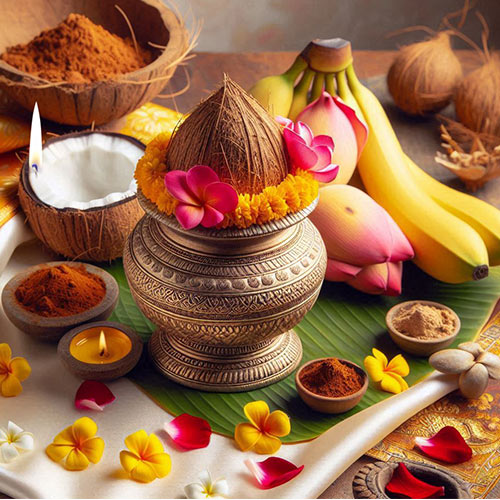
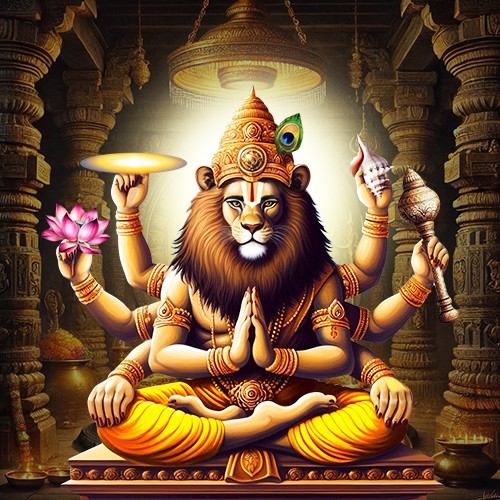
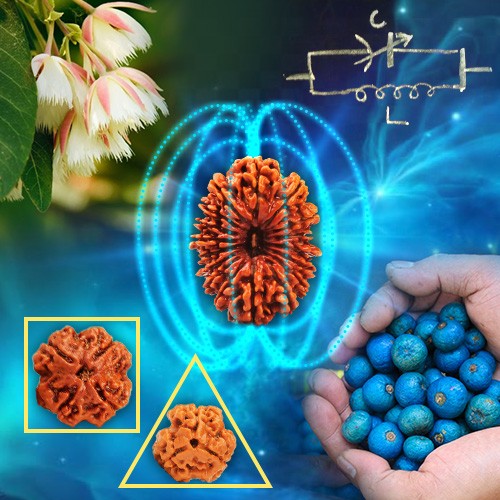
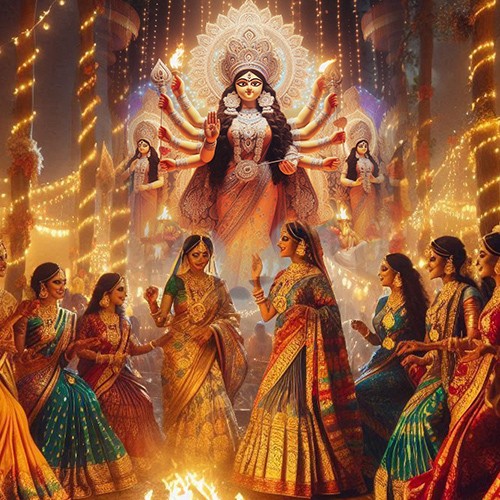

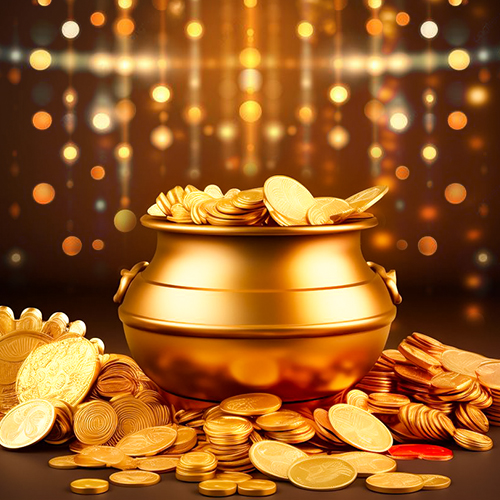
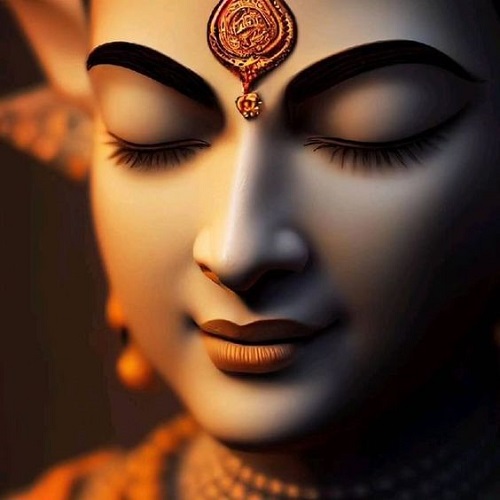
.jpg)
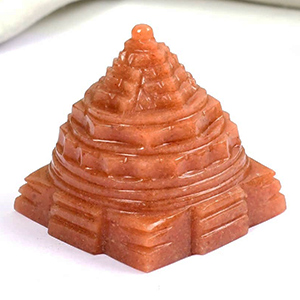
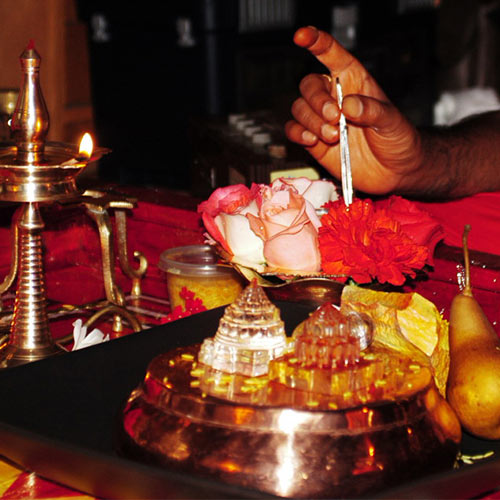
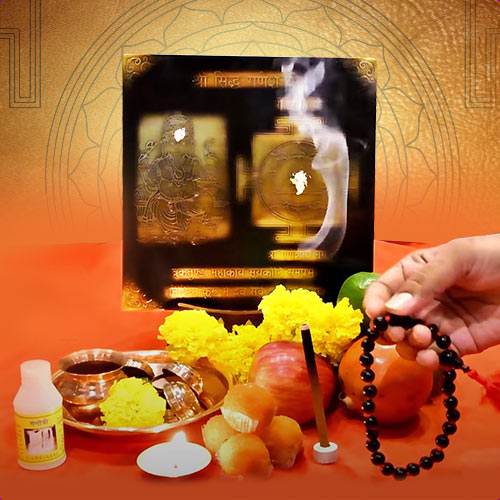
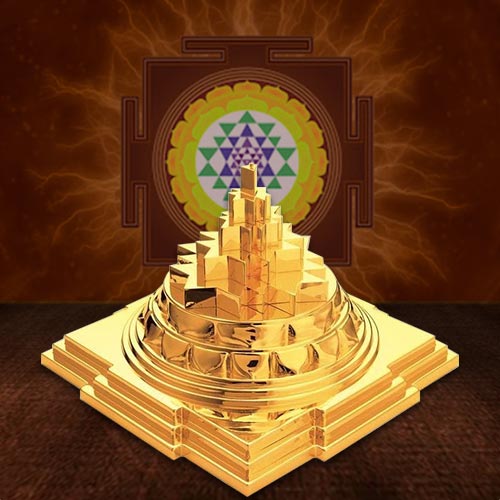
Adithya gada
|February 3, 2025
Hi
Sandhya Mendon
|December 4, 2024
I'd like to talk to someone to be able to get a better understand in how to customise the yantras and to understand how to manage on day to day basis.
Narayana Reddy Prasad
|June 5, 2024
Shiva Shakti
Cravi
|May 1, 2024
Which yantra best for business
Devan
|April 21, 2024
This article is well written with the in-depth information for readers. Plus also on the complexity of Yantras with videos, and contents. Thank you.